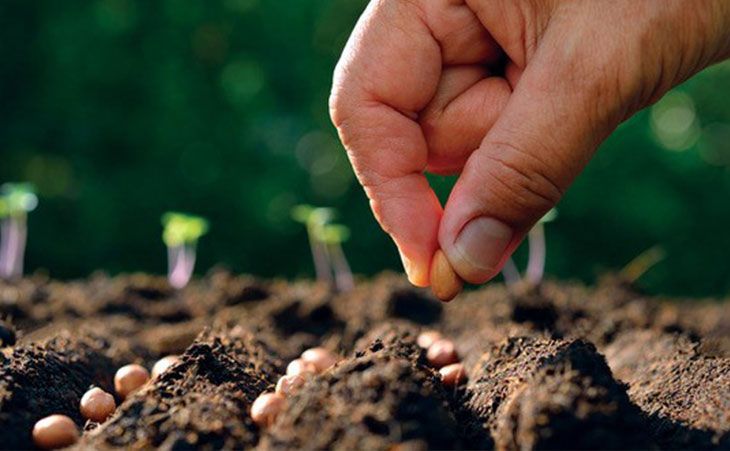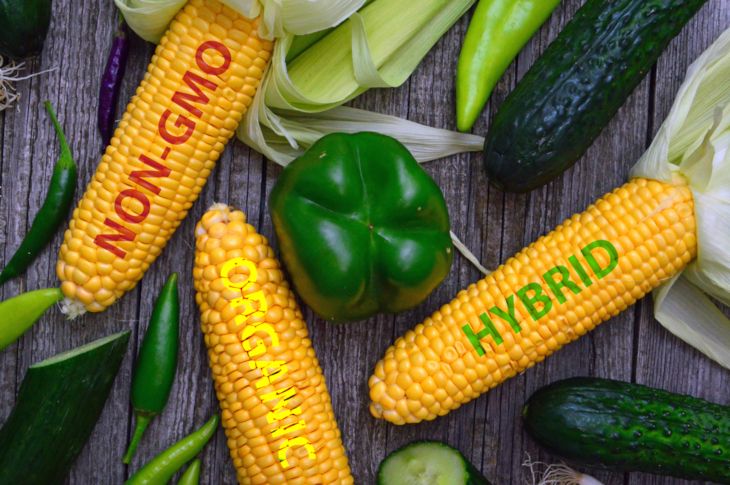Open-Pollinated Seeds

There are three kinds of seeds: hybrid, open-pollinated and heirloom. Below are definitions and examples of each seed type to clear up the common confusion that surrounds them.
Hybrid seeds
A hybrid is created when two different varieties of a tree or plant are purposefully cross-pollinated to create a single new variety that embodies the best characteristics of each "parent." It is these seeds that are commonly sold in the little packets you buy at garden centers and online. Hybrid seeds are often also called F1 seeds, which is a genetic term for Filial 1 ("first children"). F1 seeds are the product of a first-generation cross between two varieties.
Unfortunately, hybrid seeds from future generations (F2 and thereafter) will not produce true-to-parent; saving seeds from a hybrid plant will have an unpredictable result, at best. You might get something similar to the parent; or it might be sterile; but it will definitely be less vigorous than the previous generation. Because you can't save hybrid seeds, you must buy new seeds every year in order to harvest that variety.
The most apt adjective to describe hybrids is "uniformity," which has its benefits. When you plant a hybrid seed, you can expect whatever disease-resistance is promised on the packet, that the produce will mature in the number of days noted on the packet, and that the plant's size and color will be virtually identical for each seed you plant. These are the varieties you most often see in supermarkets; commercial growers rely on hybrid varieties because there are few surprises.
Open-pollinated seeds
In contrast to hybrid seeds, open-pollination occurs by "accident": via incidental human touch/transfer, insects, wind, birds or any other natural means.
If you save the seed and plant it the following season, you will pretty much get the same plant you had the previous year. This is a great, cost-effective way for you to select plants that do well in your garden.
Open-pollinated seeds do have a few downsides, but they don't usually have much of an impact on home gardeners. Plants may mature more sporadically than hybrids, or the produce color may vary a bit from plant to plant. This "diversity" is a definitive indicator that it's open-pollinated. It's important to note that if you are a seed-saver and notice a plant that is strikingly different than the rest of the row, that mutated plant should be destroyed, as it will hybridize any seed you collect next year and alter the strain.
Heirloom seeds
Heirloom varieties - generally those that are 50+ years old or pre-World War II - are just what they sound like: they're older open-pollinated varieties that are passed down through the generations, like Grandma's jewelry. Back in the early 1900s, plant breeders developed many new open-pollinated varieties in an effort to create a more stable genetic lineage that would result in more uniform produce. These heirloom varieties are open-pollinated strains which either pre-date or are unaltered by the earliest open-pollinated breeding work.
Heirlooms are great because they:
- Preserve biodiversity, which is so important to the health of humans and the planet. Inbreeding and over-hybridizing causes genetic defects and increases the chance for a given variety to become extinct.
- Tend to adapt to local soils and climates better than hybrids because they haven't been trained to become fussy.
- Have unmatched flavor that's missing in today's hybrids.
- Are very, very inexpensive - just save the seeds and replant next year!
Heirloom plants may not produce as much, or grow as fast or thick or tall as their hybrid counterparts; fans of heirloom plants slough this off in favor of the flavor, and just plant more to compensate.
Note: All heirlooms are open-pollinated, but not all open-pollinated plants are heirlooms. Heirlooms actually represent only a small slice of the total universe of plants and trees.
By sticking with open-pollinated varieties, you'll be growing food that has not had the flavor bred out of it in favor of uniformity. It tastes better. Yields may be a little smaller, and each peach or tomato you harvest may not look exactly the same, but it's real food, the way Mother Nature intended it to be.
To boot, you're helping to conserve genetic diversity and save the wonderful heritage of old and unique varieties. It's a kind of historical preservation that connects generation after generation to the joys of gardening and growing your own food, and reminds us all how good fresh fruit and vegetables taste when you pick them yourself!
Learn more about the definitions of GMO, hybrid and organic:




